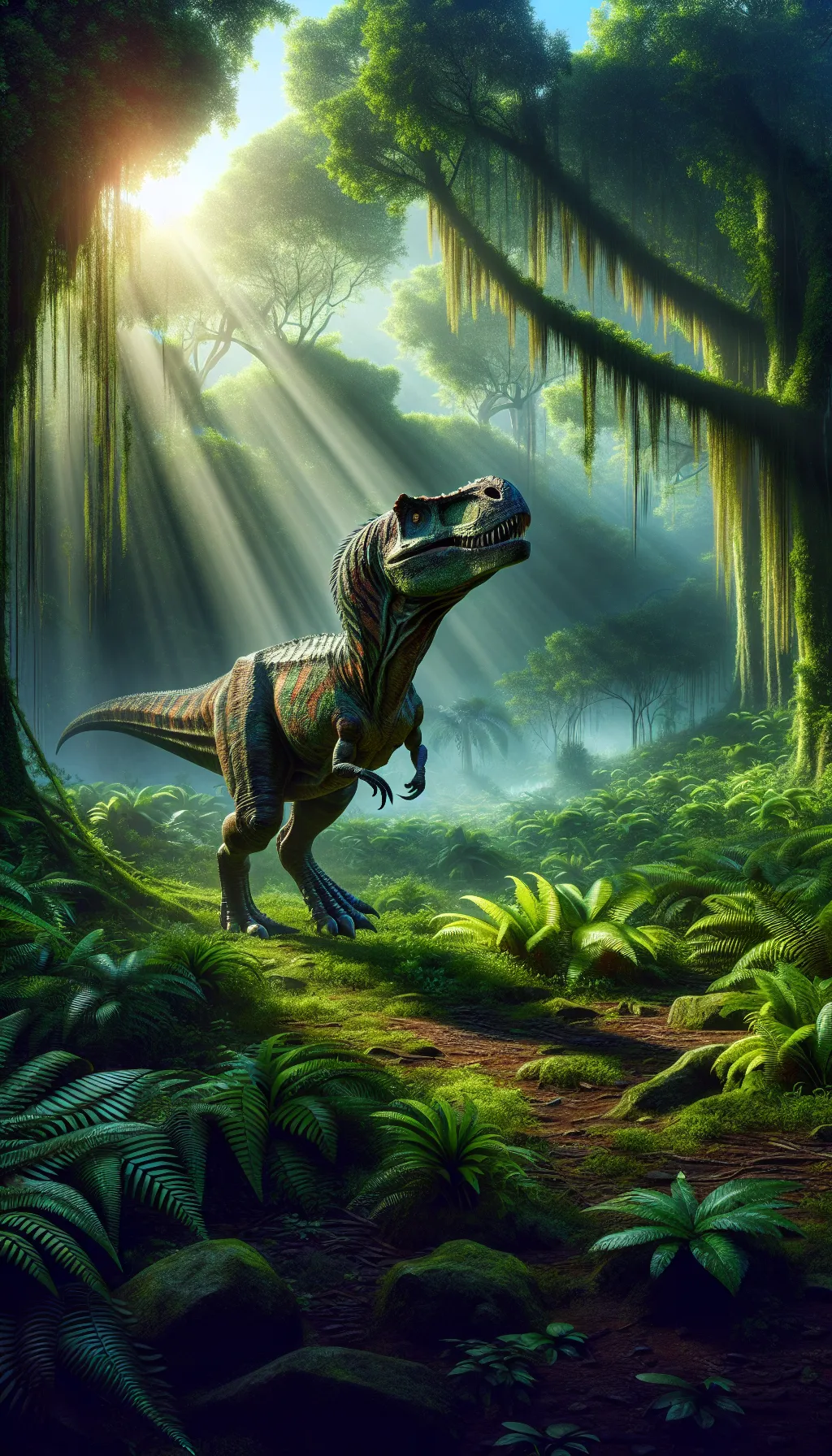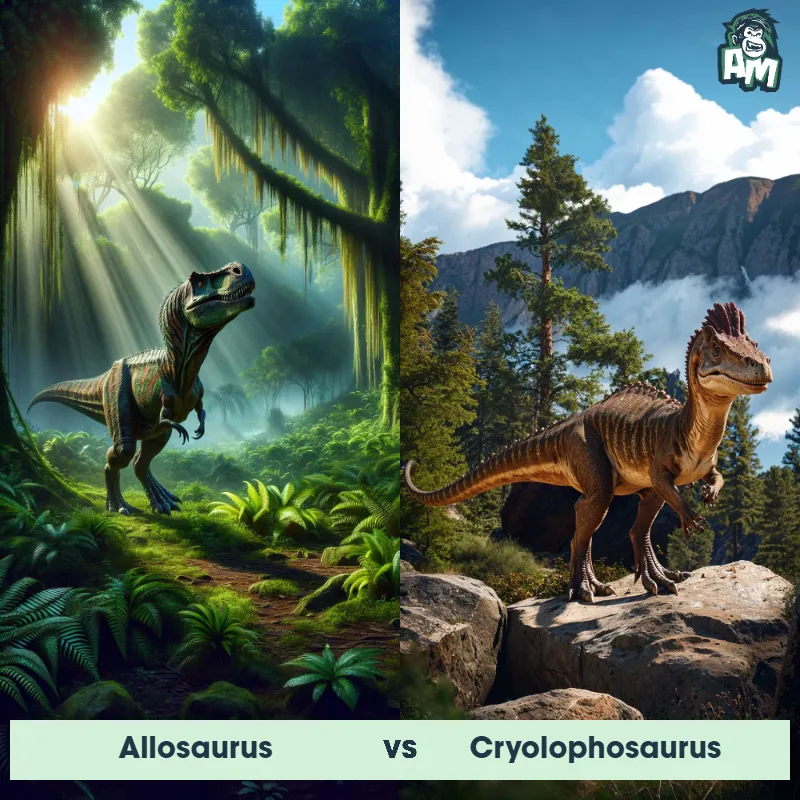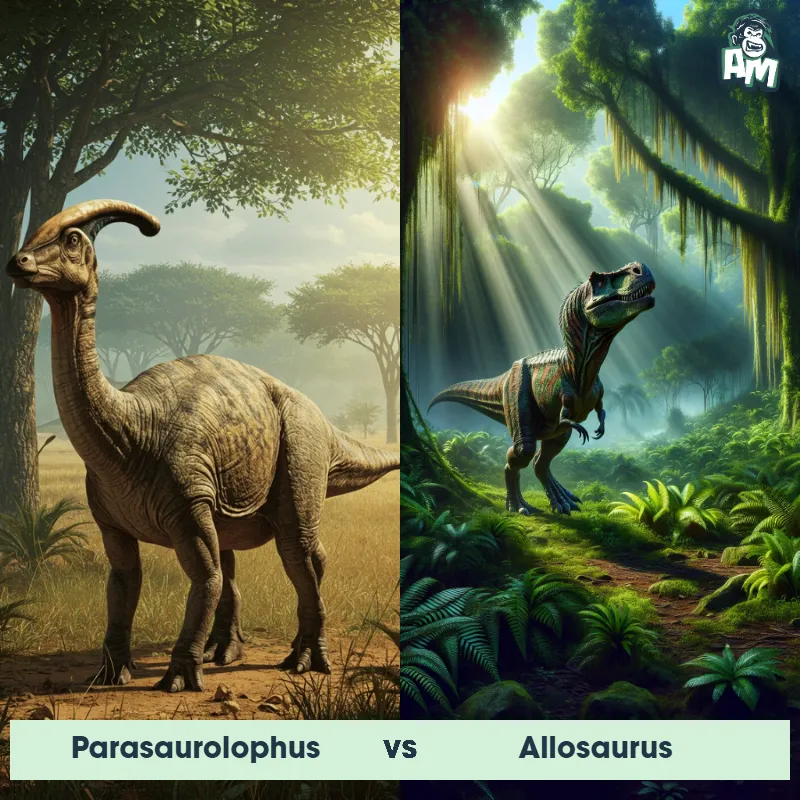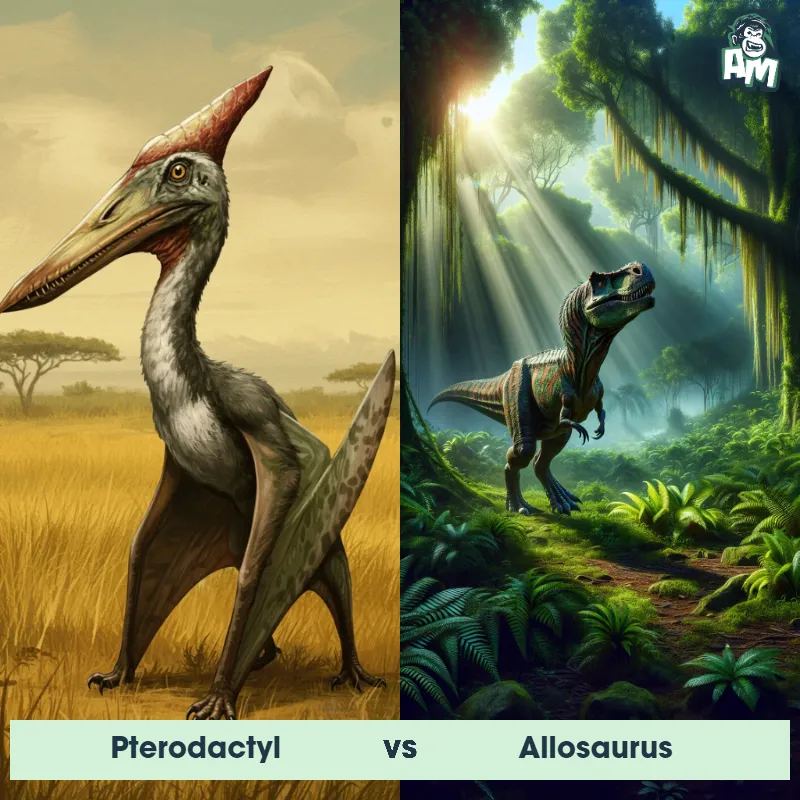The Allosaurus
The Allosaurus, also known as the "different lizard," was a large carnivorous dinosaur that lived during the late Jurassic period. It was a bipedal predator with a massive skull filled with sharp teeth, a strong neck, and powerful hind limbs. Allosaurus had three-fingered hands with sharp claws, a long tail for balance, and could grow up to 40 feet in length.

| Allosaurus | |
|---|---|
| Size | Up to 30 feet (9.1 meters) |
| Weight | 2.3 tons (4,600 pounds) |
| Speed | 20-30mph (32-48km/h) |
| Key Strength | Bite Force |
| Biggest Weakness | Short Arms |
| Scientific Name | Allosaurus |
| Family | Allosauridae |
| Habitat | Terrestrial |
| Geography | North America, Europe, Africa |
| Diet | Carnivorous |
| Lifespan | 20 years - 30 years |

The Allosaurus
The Allosaurus, also known as the "different lizard," was a large carnivorous dinosaur that lived during the late Jurassic period. It was a bipedal predator with a massive skull filled with sharp teeth, a strong neck, and powerful hind limbs. Allosaurus had three-fingered hands with sharp claws, a long tail for balance, and could grow up to 40 feet in length.
Fun Fact: Allosaurus is one of the most well-known theropod dinosaurs, and its name means "different lizard" in reference to its unique vertebrae that distinguished it from other dinosaurs of its time.
| Allosaurus | |
|---|---|
| Size | Up to 30 feet (9.1 meters) |
| Weight | 2.3 tons (4,600 pounds) |
| Speed | 20-30mph (32-48km/h) |
| Key Strength | Bite Force |
| Biggest Weakness | Short Arms |
| Scientific Name | Allosaurus |
| Family | Allosauridae |
| Habitat | Terrestrial |
| Geography | North America, Europe, Africa |
| Diet | Carnivorous |
| Lifespan | 20 years - 30 years |
Allosaurus Matchups
We use AI to simulate matchups between the Allosaurus and other animals. Our simulation considers size, strength, and natural predatory behaviors to determine the most likely outcome.
Allosaurus: Diet, Predators, Aggression, and Defensive Behaviors
What did Allosaurus eat?
Allosaurus were carnivorous dinosaurs that primarily fed on large herbivorous dinosaurs such as Stegosaurus and Apatosaurus. Their diet also consisted of smaller prey like ornithopods and other small dinosaurs. Allosaurus used their sharp teeth and strong jaws to tear into the flesh of their prey.
Did Allosaurus have any predators?
As apex predators during the Late Jurassic period, Allosaurus did not have many natural predators. However, they may have occasionally competed with other large predators like Ceratosaurus for food sources.
Were Allosaurus aggressive?
Allosaurus were known to be aggressive hunters and would actively seek out and ambush their prey. They were solitary hunters and likely exhibited aggressive behavior towards other individuals of their own kind, especially when competing for food or territory.
Did Allosaurus fight with other dinosaurs?
Allosaurus are believed to have engaged in fierce battles with other dinosaurs, especially rivals or potential competitors. These fights could have been for mating rights, territory, or resources. Fossil evidence suggests that Allosaurus had combat adaptations such as thick, reinforced skulls used for head-butting.
How did Allosaurus defend themselves?
To defend themselves from potential threats, Allosaurus would rely on their size, strength, and agility. They could use their sharp claws and teeth as weapons to fend off attackers. Additionally, their powerful hind limbs allowed them to quickly flee from danger if necessary.
What was the biggest weakness of Allosaurus in a fight?
Despite their formidable size and strength, Allosaurus had a vulnerability in the form of their relatively weak arm muscles compared to their powerful legs. This imbalance made it difficult for them to effectively defend themselves from attacks aimed at their midsection or neck. Additionally, their broad, heavy build could limit their agility in combat scenarios.
Fun Fact: While Allosaurus was a fearsome predator, it is believed that it may have also been a scavenger, feeding on carcasses left behind by other carnivores in its ecosystem.
Fun Fact: Allosaurus had a diverse range of prey, from small dinosaurs to large herbivores like Stegosaurus and Diplodocus, making it a versatile and successful predator in its environment.

















